By Lorraine Snipper
A great blue heron is quite a stately, and large, bird, and can be found in much of the United States year-round. But when you think about what went into the creation of this bird that you’re viewing in your camera or binocular sights, it’s quite impressive. How did this graceful bird come into this world? Well, since they don’t just materialize out of nowhere, we need to look at the parents, their breeding and mating rituals, and nesting and caring for their offspring. The parents do not mate for life, so they go through their courtship rituals every year, probably with a different mate each time. Through a tilt of the head, the male and female may signal each other that they are ready and willing to mate. After that, they are off to the races!
First, the male picks the nesting site. He then brings sticks to the female to build a sturdy nest. He must bring just the right sticks! He starts with bigger sticks for the bottom, that will be the frame into which the female will weave smaller sticks and twigs. He will examine trees that have dropped their leaves, and test multiple branches, tugging until the branches break loose. Later on, the female will use smaller twigs and leaves to create a soft layer in the cup of the nest.

The male then carries the branches to the nesting site. He will continue to do this many times over several days, even weeks.

Once in the nesting tree, the male proudly presents the female with his gift of the perfect stick/branch/twig. This involves a great fluffing of the mane of feathers on his breast and back. The female also fluffs up, signaling her approval and acceptance of the gift.


This is a proud moment for the male. The female moves to place the stick, she is the master architect of this pairing. But the male watches over her, to ensure that she doesn’t make any mistakes!
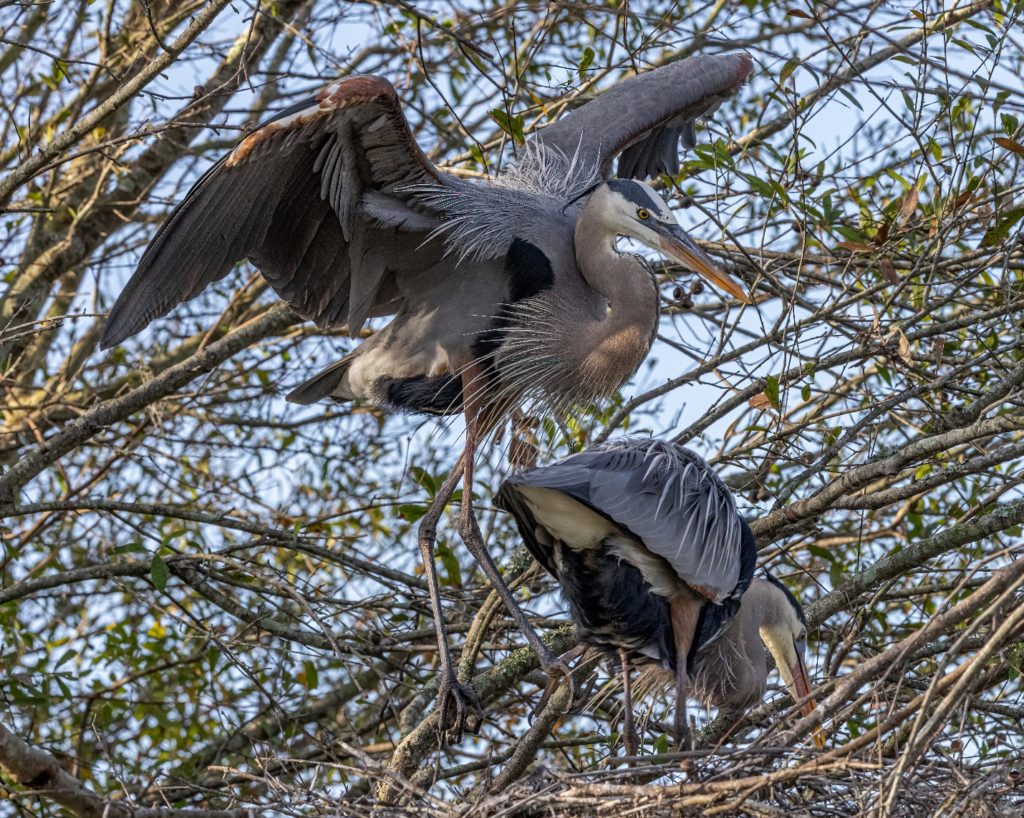

Once the female is done placing the stick, and the nest is coming along nicely, there is a bit of feather rubbing by the male, preening the female and paying her a great deal of attention. In addition, the pair will mate a number of times, probably until the female produces eggs. Until such time, the nest construction is continually tweaked by the female to ensure its strength for the safety of the babies, with the female testing twigs and weaving them together more tightly.
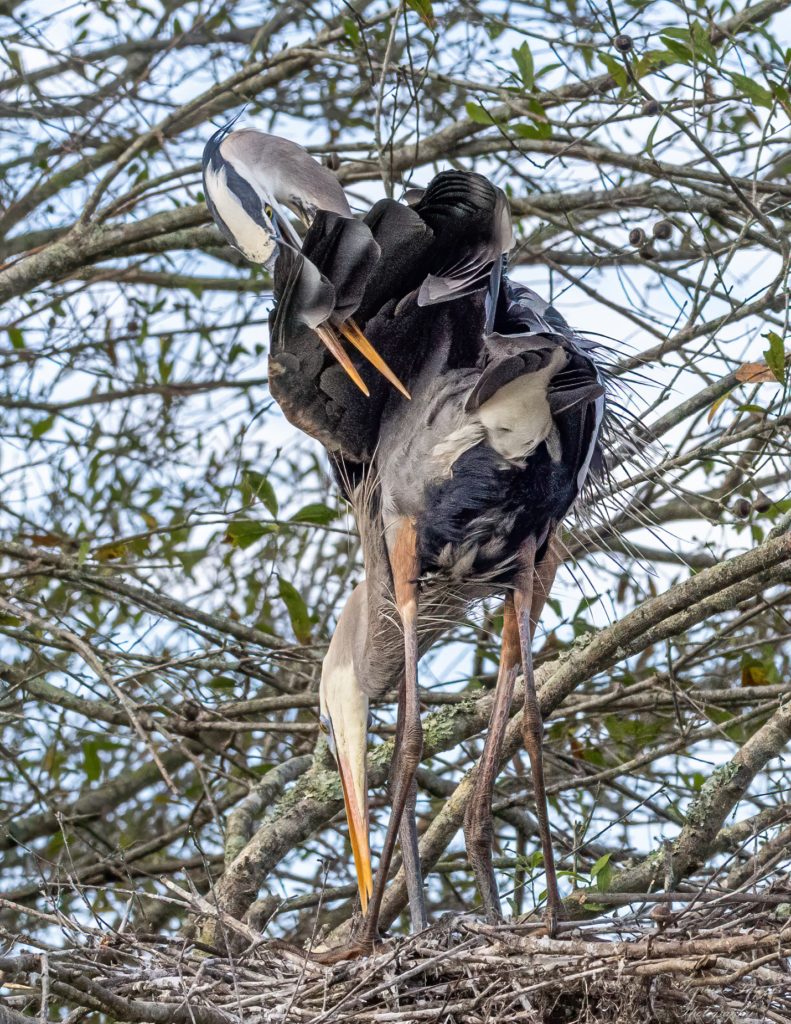
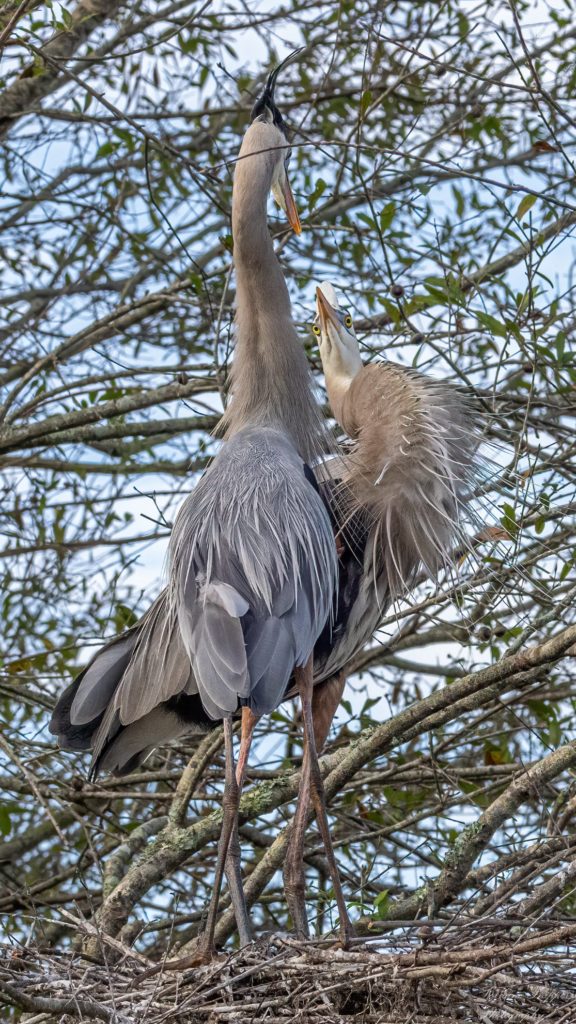
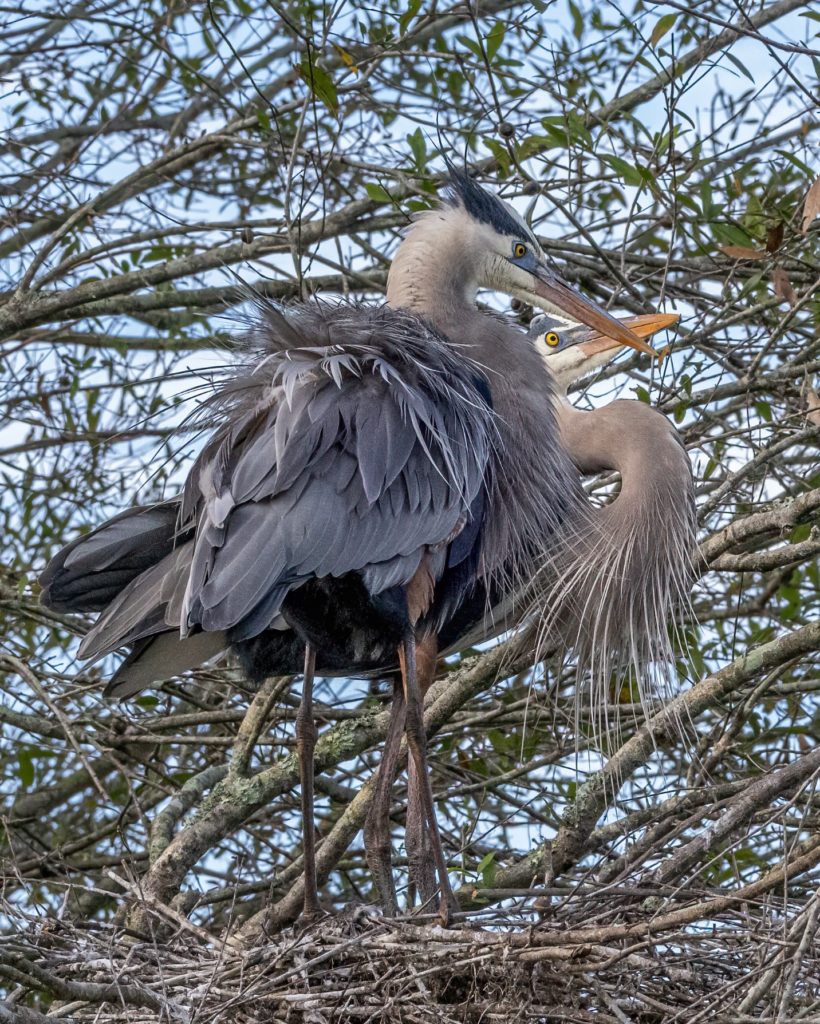
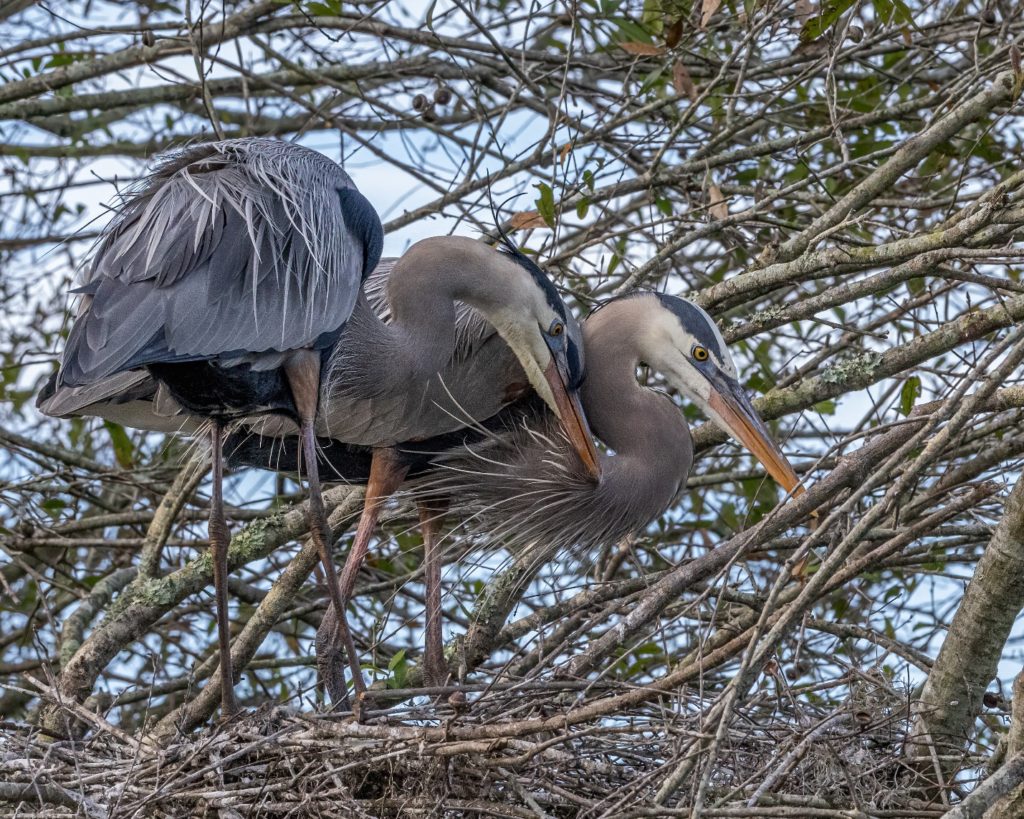
Once the eggs are laid, they incubate for about a month, before the chicks hatch, and then either the adult male or female handlethe babysitting duties, while the other hunts for fish and regurgitates food to feed the hatchlings upon returning to the nest. Eventually, the chicks grow into ungainly juveniles and finally, anywhere from four to seven months after hatching, fledge from the nest (the literature varies greatly on this period of time!)
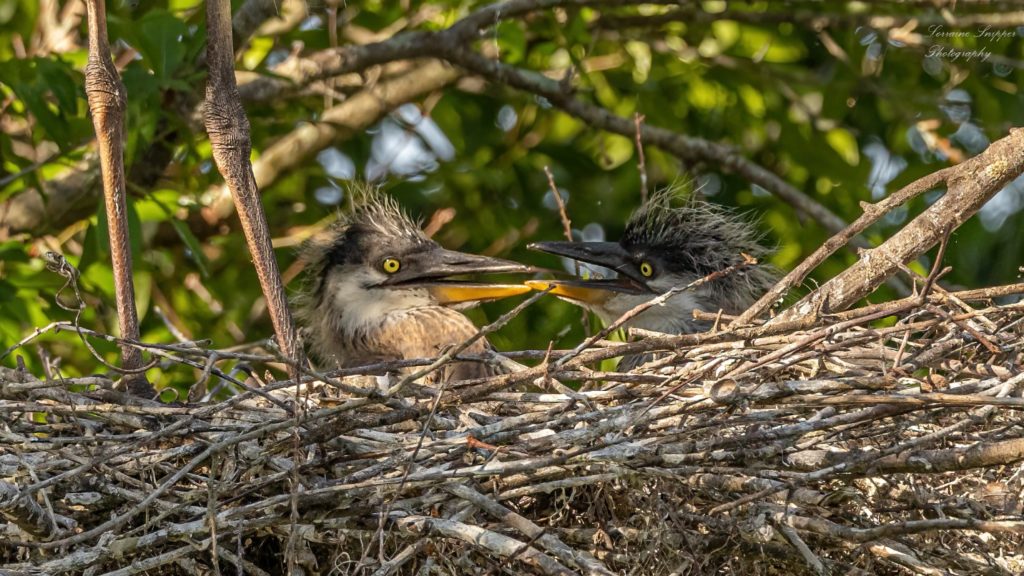
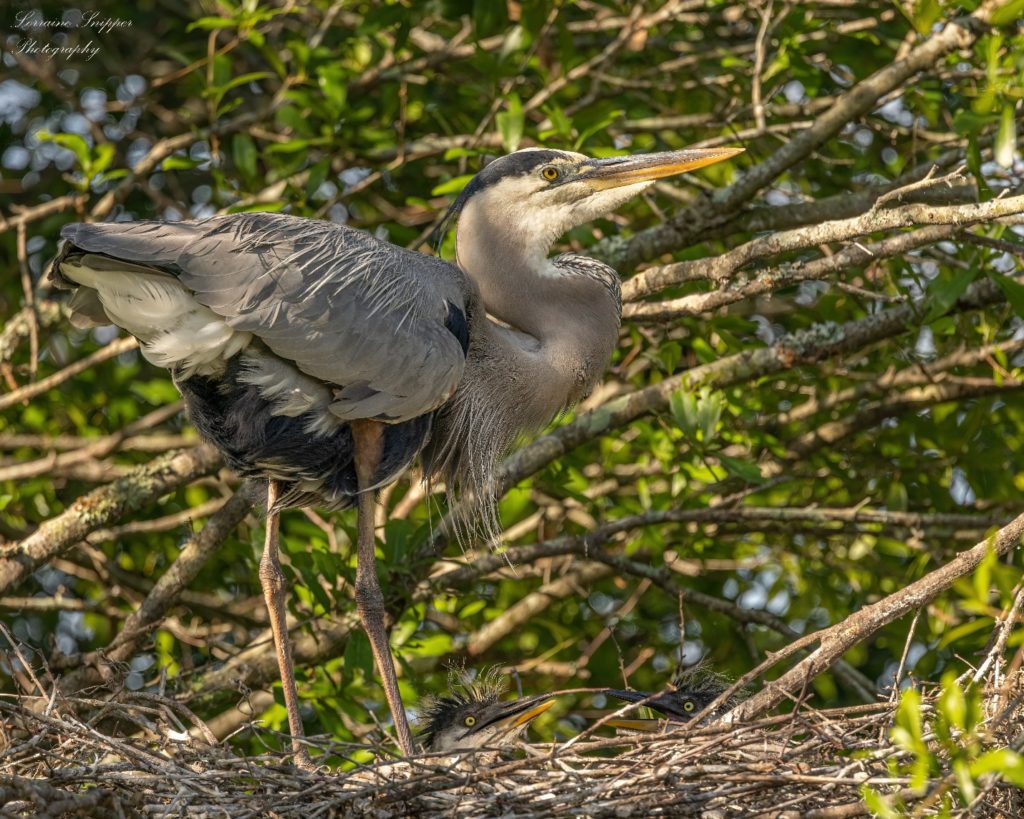

Note: These photographs were taken at different times during the course of the mating season, and are meant to portray the different stages of courtship, nest building and finally babies. The nest shots, however, were from the same nest in this year’s nesting season.
All photos are the exclusive property of Lorraine Snipper and may not be copied or distributed except as disseminated in this article.
